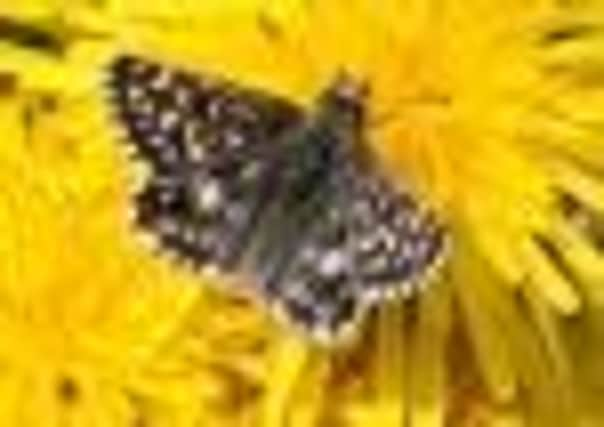Butterfly experts all a-flutter as rare species make comeback


Numbers of the Northern Brown Argus rose by more than 20 per cent after the hot, dry conditions saw the insects emerge weeks earlier than usual.
Butterfly experts said the rise was mirrored by increased numbers of other species, some of which grew by more than 100 per cent.
Advertisement
Hide AdAdvertisement
Hide AdDr Tom Brereton, head of monitoring at Butterfly Conservation, said: “The great spring weather provided respite for our beleaguered butterflies but wide-ranging conservation efforts are needed to reverse long-term declines.”
He added: “We need to put efforts in place in order to help the butterflies but we also need to rely on the weather. It is a combination of factors.”
The Duke of Burgundy butterfly, which has suffered recent declines, saw its population rise by 65 per cent between 2010 and 2011 thanks to the weather. Other rare butterflies to flourish were the Grizzled Skipper, which saw a 96 per cent rise, and the Pearl-bordered Fritillary, whose population rose by 103 per cent.
The data, collected by the UK Butterfly Monitoring Scheme, recorded major population falls for common species including the Peacock and Small Tortoiseshell as the warm spring turned into a colder-than-usual summer, however.
The scheme, which has run since 1976 in conjunction with Butterfly Conservation and the Centre for Ecology and Hydrology (CEH), sees volunteers collect data during the summer from more than 1,000 sites across the UK.
Dr Marc Botham, from the CEH, said: “Annual trends show us how strongly the day-to-day weather can affect butterfly populations in the short term but the UKBMS dataset collected over 36 years reiterates the importance of long-term data in assessing the state of UK butterfly populations beyond these annual fluctuations.
“The high-quality data of the UKBMS is attributable to the continuous support of thousands of volunteer recorders.”
Other butterflies to record rises in population were migrant butterflies the Red Admiral, with a 123 per cent increase, and the Clouded Yellow, with a 41 per cent increase.
Advertisement
Hide AdAdvertisement
Hide AdGrass-feeding butterflies the Lulworth Skipper, only found in a small stretch of the Dorset coast, saw a 84 per cent increase after years of decline.
The Northern Brown Argus occurs in small colonies of less than fifty 50 individuals and the females have only one brood a year.Among the best places to spot them are the East Lammermuir Deans in East Lothian, Keltneyburn reserve near Aberfeldy in Perthshire and the Tummel Shingle Islands near Pitlochry.
But despite a number of species thriving in 2011 the overall picture for many butterflies is bleak. Almost three quarters of UK butterfly species have decreased in population during the last decade.